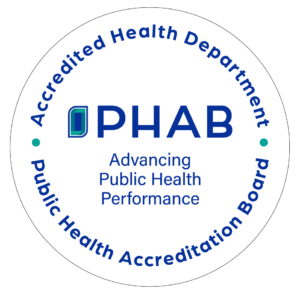Mental Health Resources
Mental Health America’s COVID-19 Pandemic Information for Mental Health and COVID-19.
_______________________________________________________________________________________
Worry, Stress, Anxiety?
You probably experience worry, stress or anxiety at least once on any given day. Three out of four Americans reported feeling stressed in the last month. But in one of these moments, if asked which you were experiencing — worry, stress or anxiety — would you know the difference?
What is worry?
Worry is what happens when your mind dwells on negative thoughts, uncertain outcomes or things that could go wrong. Worry tends to be repetitive, obsessive thoughts. Worry happens only in your mind, not in your body.
How does worry work?
Worry actually has an important function in our lives. Worry is likely to cause us to problem-solve or take action, both of which are positive things. It’s only when we get stuck thinking about a problem that worry stops being functional.
Three things to help your worries:
- Give yourself a worry “budget,”an amount of time in which you allow yourself to worry about a problem. When that time is up (start with 20 minutes), consciously redirect your thoughts.
- When you notice that you’re worried about something, push yourself to come up with a next step or to take action.
- Write your worries down. Research has shown that just eight to 10 minutes of writing can help calm obsessive thoughts.
Remember: Worry is helpful only if it leads to change, not if it turns into obsessive thoughts.
What is stress?
Stress is a physiological response connected to an external event. In order for the cycle of stress to begin, there must be a stressor. This is usually some kind of external circumstance, like a work deadline or a scary medical test. Stress is a reaction to environmental changes or forces that exceed the individual’s resources.
How does stress work?
Stress results in a physical response. It releases adrenaline and cortisol, which help activate your brain and body to deal with the threat. Symptoms of stress include a rapid heart rate, clammy palms and shallow breath. Stress might feel good at first, as the adrenaline and cortisol flood your body and helps you accomplish a task.
Chronic stress, on the other hand, is when your body stays in this fight-or-flight mode continuously (usually because the situation doesn’t resolve). Chronic stress is linked to health concerns such as digestive issues, an increased risk of heart disease and a weakening of the immune system.
Three things to help your stress
- Get exercise. This is a way for your body to recover from the increase of adrenaline and cortisol.
- Get clear on what you can and can’t control. Then focus your energy on what you can control and accept what you can’t.
- Don’t compare your stress with anyone else’s stress. Different people respond differently to stressful situations.
Remember: Stress is a biological response that is a normal part of our lives.
What is anxiety?
If stress and worry are the symptoms, anxiety is the culmination. Anxiety has a cognitive element (worry) and a physiological response (stress), which means that we experience anxiety in both our mind and our body. Anxiety is what happens when you’re dealing with a lot of worry and a lot of stress.
How does anxiety work?
Remember how stress is a natural response to a threat? Well, anxiety is the same thing … except there is no threat.
Anxiety in some ways is a response to a false alarm. You start to have all the physiology of a stress response because you’re telling yourself that there is a threat. The blood is flowing, the adrenaline is pumping, your body is in a state of fight or flight — but there is no immediate threat.
There is also a difference between feeling anxious (which can be a normal part of everyday life) and having an anxiety disorder. An anxiety disorder is a serious medical condition that may include stress or worry.
Three things to help your anxiety
- Limit your sugar, alcohol and caffeine intake. Because anxiety is physiological, stimulants may have a significant impact.
- Check in with your toes. How do they feel? Wiggle them. This kind of refocusing can calm you and break the anxiety loop.
- When you’re in the middle of an anxiety episode, talking or thinking about it will not help Try to distract yourself with your senses: Listen to music, jump rope for five minutes, or rub a piece of Velcro or velvet.
Remember: Anxiety happens in your mind and your body so trying to think your way out of it won’t help.
Takeaway messages:
1) Worry happens in your mind, stress happens in your body, and anxiety happens in your mind and your body.
2) In small doses, worry, stress and anxiety can be positive forces in our lives. But research shows that most of us are too worried, too stressed and too anxious.
3) The good news is that there are simple (not easy) first steps to help regulate your symptoms: Get enough sleep; eat regular, nutritious meals; and move your body/ exercise.
Resources:
-
For individuals needing help with mental health, call the Klein Family Center at 1-800-NEXT-STEP or visit the 24/7 Crisis Center at 802 Baltimore Pike, Bel Air. If in immediate danger or experiencing a medical emergency, call 9-1-1. Both Mobile Crisis and the Klein Family Center remain open during all but the most severe weather conditions. In the event of service interruption due to severe weather, call 9-1-1 and ask for a CIT officer or visit your nearest hospital Emergency Department.
-
SAMHSA’s Disaster Distress Helpline provides 24/7, 365-day-a-year crisis counseling and support to people experiencing emotional distress related to natural or human-caused disasters. Call 1-800-985-5990 or text TalkWithUs to 66746 to connect with a trained crisis counselor.
-
Support your family friends by being able to provide Psychological First Aid. Online training can be found at:
-
Psychological First Aid: General ( https://learn.nctsn.org/course/index.php?categoryid=11 )
-
Psychological First Aid: Schools ( https://learn.nctsn.org/enrol/index.php?id=221 )
-
-
Talking to our Children about the Coronavirus | NeuroLogic
https://www.youtube.com/watch?v=LMxHVOLfy00
-
Parent/Caregiver Guide to Helping Families Cope With the Coronavirus Disease 2019 | NCTSN
https://www.nctsn.org/resources/parent-caregiver-guide-to-helping-families-cope-with-the-coronavirus-disease-2019
-
Simple Activities for Children and Adolescents | NCTSN
https://www.nctsn.org/resources/simple-activities-children-and-adolescents
-
Caring for Each Other | Sesame Street
https://www.sesamestreet.org/caring
-
“Just Breathe” | Wavecrest Films
https://vimeo.com/114715169


